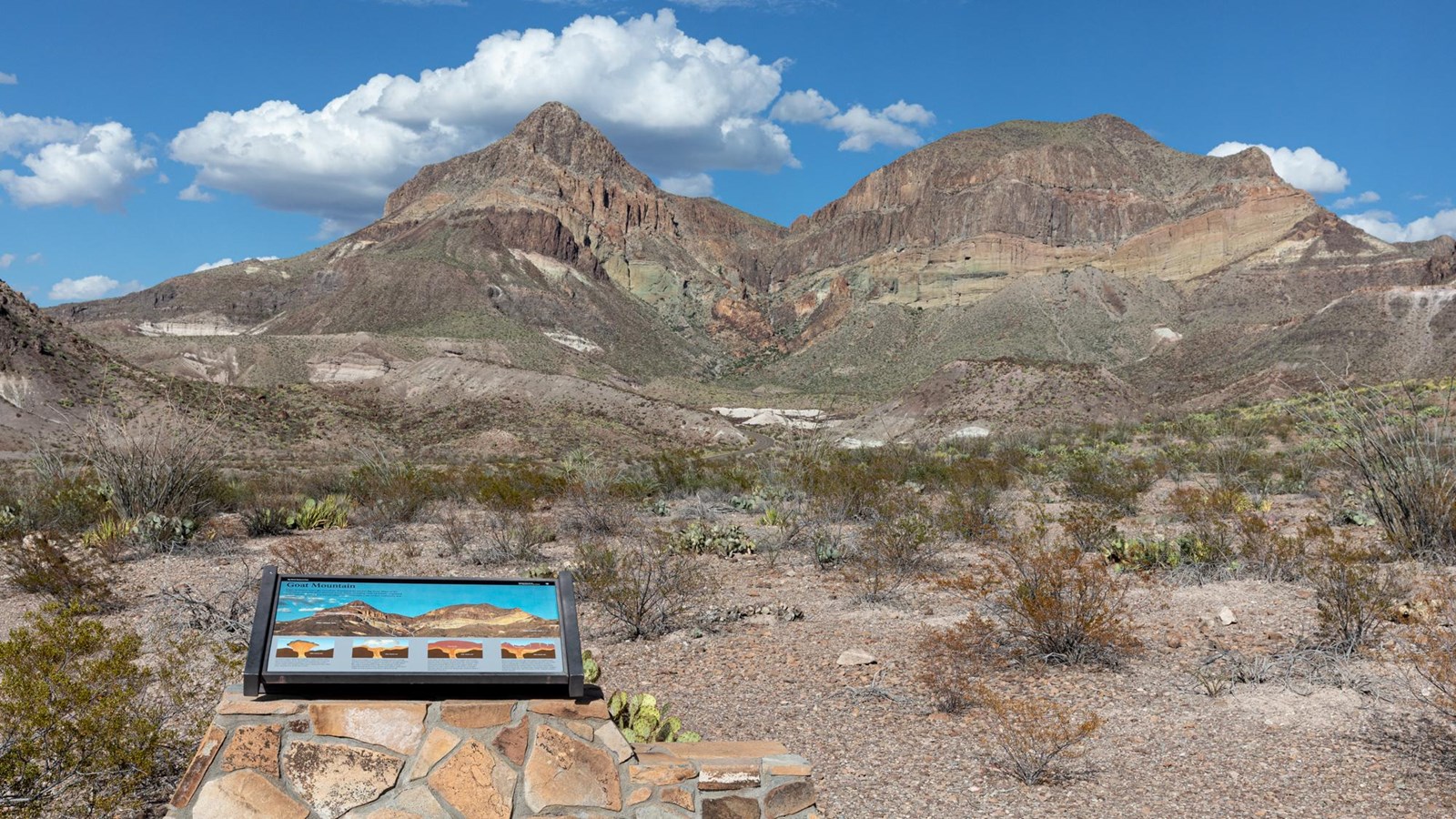Last updated: July 18, 2025
Place
Goat Mountain Exhibit

NPS/CA Hoyt
Quick Facts
Location:
14.2 miles from northern end of Ross Maxwell Scenic Drive.
Significance:
Geology
Amenities
6 listed
Cellular Signal, Historical/Interpretive Information/Exhibits, Parking - Auto, Parking - Bus/RV, Scenic View/Photo Spot, Wheelchair Accessible
Big Bend has a fiery, geologically violent past. Stop at this wayside to learn more about how collapsing calderas, steaming volcanic vents, and super hot pyroclastic flows created Goat Mountain.
The exhibit text reads, "Some 29 million years ago, volcanoes dominated the ancient Big Bend. Many of the formations along the Ross Maxwell Scenic Drive, including Goat Mountain, originated in this volcanic past. A new theory (diagrams below) tells a tale of fiery explosions and massive volcanic domes.
An initial large explosion created a crater within older, layered volcanic rock. Possibly the explosion occurred when rising magma (molten rock beneath the earth's crust) came into contact with water trapped in the older lava, causing it to flash into steam.
Silica-rich magma continued surging upward, causing repeated pyroclastic eruptions (a mixture of super-heated gas, ash, and rock fragments). The flows partially filled the crater, and formed a collar of steaming volcanic material around the vents. Similar pyroclastic material is visible at Tuff Canyon and Burro Mesa Pouroff.
Over time, the gas content of the magma decreased, and the final eruptions produced thick, slow-moving, silica-rich lava (magma that reaches the surface). The lava formed thick domes that were higher than, and spread over, the crater walls. A dozen or so similar volcanic domes dotted the landscape between Burro Mesa and Castolon.
About 27 million years ago, the region was uplifted and faulted and erosion began to shape the land we see today. The overlying silica-rich lava was resistant to erosion and formed steep, jointed cliffs. The weaker pyroclastic deposits below are eroding away, exposing a dike (magma intrusion) that may represent part of the original feeder system."
The exhibit text reads, "Some 29 million years ago, volcanoes dominated the ancient Big Bend. Many of the formations along the Ross Maxwell Scenic Drive, including Goat Mountain, originated in this volcanic past. A new theory (diagrams below) tells a tale of fiery explosions and massive volcanic domes.
An initial large explosion created a crater within older, layered volcanic rock. Possibly the explosion occurred when rising magma (molten rock beneath the earth's crust) came into contact with water trapped in the older lava, causing it to flash into steam.
Silica-rich magma continued surging upward, causing repeated pyroclastic eruptions (a mixture of super-heated gas, ash, and rock fragments). The flows partially filled the crater, and formed a collar of steaming volcanic material around the vents. Similar pyroclastic material is visible at Tuff Canyon and Burro Mesa Pouroff.
Over time, the gas content of the magma decreased, and the final eruptions produced thick, slow-moving, silica-rich lava (magma that reaches the surface). The lava formed thick domes that were higher than, and spread over, the crater walls. A dozen or so similar volcanic domes dotted the landscape between Burro Mesa and Castolon.
About 27 million years ago, the region was uplifted and faulted and erosion began to shape the land we see today. The overlying silica-rich lava was resistant to erosion and formed steep, jointed cliffs. The weaker pyroclastic deposits below are eroding away, exposing a dike (magma intrusion) that may represent part of the original feeder system."
